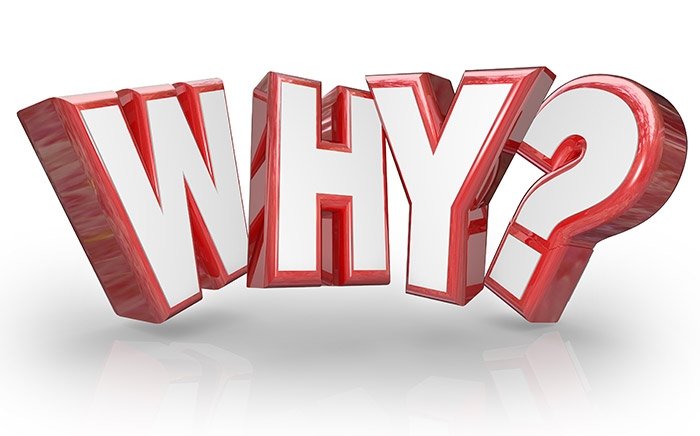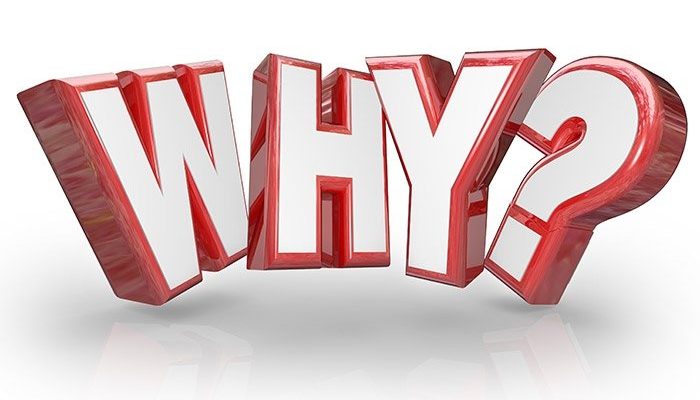
When you’re troubleshooting a slamming door—whether it’s one of those heavy-duty steel entry doors or an old wooden one—there’s usually a mechanical reason. Think of your door’s movement like a see-saw: it’s all about balance, the parts holding it up, and how smoothly things move. Most of the time, it comes down to your hinges, your door closer (the hydraulic arm or spring you sometimes see at the top), and the way things are aligned. Even the brand you use (like Schlage, Kwikset, or some universal options) can make a difference in how easy it is to fix. Let me explain where to look—and how to start fixing it.
What Makes an Exterior Door Slam Shut?
Honestly, a slamming exterior door is almost always a sign that *something’s off* with its hardware, installation, or surroundings. At the root of it, you’ve got three main players: gravity, air pressure, and the mechanics (like hinges and closers). Sometimes, it’s a combination. That’s why a gusty day or even closing a window elsewhere in the house can make your door slam harder than usual. But if it happens every time—rain or shine—there’s more to the story.
Think about your door as a big, heavy object hinged on one side. If the parts holding it up are slightly bent, loose, or out of sync, gravity will pull it shut faster than you’d expect. If your house is airtight, a small difference in air pressure (like when you close another door) can push or pull on the exterior door, making it shut with a bang. And finally, if you have a *door closer* (that springy arm or hydraulic device at the top), it might be misadjusted or worn out, letting the door swing shut too hard rather than controlling the speed gently.
So, to figure out why your exterior door slams, you’ve got to zero in on these parts and test what’s really happening. Don’t just blame the wind—most slamming doors have a mechanical cause you can adjust or fix.
How Door Hinges Affect Slamming
Let me tell you: hinges are deceptively simple, but they’re the backbone of your door’s movement. If they’re even slightly off, *everything* changes. Hinges are supposed to keep your door perfectly aligned and let it swing smoothly. If they’re bent, loose, or the screws are pulling out of the wood, the door might fall out of plumb (meaning it tilts one way or another). That little tilt is enough to let gravity take over.
You might notice your door creeps shut on its own even if you only nudge it. That’s a classic sign your hinges aren’t set right. Sometimes, the issue is mismatched or worn-out hinges (maybe someone replaced one with a different size or a universal hinge that doesn’t fit just right). Or, the screws might be stripped—causing the hinge to flex or wiggle every time you open and close the door.
Here’s the thing: if you tug upward on the handle and see the door move a lot, or you notice black dust (which is really ground-up metal) around your hinges, it’s a pretty good sign they need attention. Swapping in new hinges or tightening them can often stop your door from slamming—especially if you pick a quality brand that matches your door’s size and weight.
Door Closers: What They Do and Why They Matter
Let’s talk about *door closers*—those spring-loaded, hydraulic, or pneumatic arms you see at the top of some exterior doors, especially on storm doors or in commercial settings. Their main job is to stop your door from swinging shut with a bang. They’re like a gentle hand, slowing things down so the door closes softly every single time. When they’re not working right, though, your door can slam as hard as if you gave it a hefty push.
There are a couple of ways a door closer can go wrong:
- Out of adjustment: Most closers have a screw or dial to adjust how quickly the door closes. If it’s set too loose, the door races ahead and slams. Too tight, and it barely moves.
- Worn seals or broken springs: Hydraulic closers rely on fluid, so leaks or old seals can make them fail. Springs can break or lose their tension over time.
- Poor installation: If the closer arm or body isn’t lined up just right, it can stick or fail to engage until the last second—letting the door slam shut.
If you’re seeing oil stains around the closer or if it just doesn’t seem to “catch” until the very end, it might be time for a replacement or a reset. Upgrading to a high-quality, brand-name closer (or even a universal fit from a hardware store) can make a huge difference. Just make sure it’s sized and rated for an *exterior* door—lighter-duty options for screen doors usually won’t cut it.
Air Pressure, Drafts, and House Movement
Ever notice your door slams only when the weather changes—or when another door or window is open? That’s all about *air pressure*. Your house is a box, and when you shut windows or run exhaust fans, you change the way air moves. Sometimes, there’s just enough difference inside and outside to suck or push the door closed in a hurry.
This is especially true if you have new, well-sealed windows and doors. Older homes “breathe” more, so air pressure is less likely to build up. But with good weatherstripping and tight seals, closing a kitchen door might send enough pressure racing through the house to make your exterior door slam. Modern, energy-efficient homes deal with this a lot.
You can troubleshoot this by:
- Opening a window or vent and testing the door again
- Checking for drafts, especially around the door frame or under the sill
- Looking at your door’s sweep (the strip at the bottom) for an overly tight fit
If air pressure is the main problem, fixing drafts or installing a vent can help. For smaller issues, adjusting the closer can make the door close more slowly, so it doesn’t catch as much of a pressure change all at once.
Misaligned Doors and Frames
Even a door that looks straight can be slightly out of whack. If the frame is twisted—or the door has swollen from moisture—it won’t close smoothly. Instead, it might stick until just the right moment, then pop free and slam shut. This is common with wooden doors in humid climates, or if your house has settled and things aren’t square anymore.
You might spot this by looking at the gap along the edge of the door—if it’s wider at the top than the bottom (or vice versa), you’ve got a misalignment. Sometimes, the latch is hard to set, or you have to really push the door to get it to close. Other times, it feels like the door shoots out of your hand and slams without warning.
Fixing this can take a bit more work. You might be able to adjust the hinges (shimming them with thin cardboard or tightening screws), or you may need to reset the frame. In some cases, trimming the edge of the door itself is the only way to stop it from sticking and slamming. If your door is really warped, replacing it—or the frame—might be the best long-term fix.
When Should You Replace Hinges or Door Closers?
You might be wondering when it’s time to give up on adjustments and just swap out your hardware. Here’s a simple rule of thumb: *if you’ve tightened everything, adjusted the closer, and your door still slams—something’s probably worn out, bent, or mismatched*. Hinges can last decades, but cheap or undersized ones (often used in rush jobs or DIY installs) wear out fast. Same with low-end door closers.
If you’re thinking about replacing hinges, try to match the size and shape exactly (look for stamped markings, or take an old one to the store). Universal hinges can work in a pinch, but for exterior doors, stick with brand-name hardware made for heavy use. For door closers, check the weight rating. A closer made for interior use won’t last long on a big, solid exterior door.
Replacing these parts isn’t as intimidating as it sounds. Most of the time, it’s just a matter of unscrewing the old piece, lining up the new one, and tightening a few screws. The trickiest part is syncing the closer’s speed—most have two screws, one for how fast the door moves and another for the final “latch” action. Go slow, test it a few times, and you’ll be surprised how much difference the right hardware makes.
Common Mistakes When Fixing a Slamming Door
Honestly, it’s easy to make things worse if you rush or use the wrong parts. Over-adjusting a door closer, using mismatched hinges, or ignoring an out-of-square frame can all make slamming even more likely—or lead to new problems like sagging doors or broken latches.
Here’s what to watch out for:
- Over-tightening closer screws: This can make it nearly impossible to open the door, or cause the closer to fail early.
- Mixing hinge sizes or types: Hinges are designed to work as a set. Mixing them leads to uneven weight and slamming.
- Poor installation: If a closer or hinge isn’t mounted properly (off by even a millimeter), the door may stick, drag, or slam no matter what you do.
- Skipping alignment: Fixing hardware without checking the door and frame for square is like putting new tires on a car with a bent axle—it might help, but not for long.
Whenever you’re troubleshooting a slamming door, go step by step. Adjust, test, and only replace what’s actually causing the problem. If you’re lost, calling in a local handyman or a locksmith (especially if you’re dealing with security doors from brands like Schlage or Kwikset) can be worth the peace of mind.
Alternatives to Traditional Hinges and Closers
If you’re tired of the whole slam-shut drama, you might want to try something a bit different. There are self-closing hinges (the kind with a built-in spring), magnetic catches, or even smart door closers that can sync with your home automation system. These offer extra control, especially if you have kids or pets coming and going.
Self-closing hinges are simple to install—just like regular ones, but they snap the door shut gently rather than letting it drop. Magnetic catches can pull the door closed at the end, holding it in place so it won’t swing open on its own. For real control, some smart closers let you adjust settings via a remote or app, so you can fine-tune how fast or slow your exterior door shuts—no screwdriver required.
Keep in mind, not every alternative fits every door. If you’ve got a heavy steel entry or a vintage wooden door, always check the hardware’s rating before you buy. Sometimes, sticking with heavy-duty, brand-name hinges and a quality hydraulic closer is still your best bet.
Final Thoughts: Making Your Exterior Door Quiet and Safe
By now, you’ve probably realized that a slamming exterior door isn’t just an annoying quirk—it’s almost always a hardware issue waiting to be solved. Whether it’s the hinges, the door closer, air pressure, or plain old misalignment, there’s a fix that matches your situation and door type. Take it step by step, notice how your door moves, and don’t be afraid to swap out old or mismatched parts for something sturdy and reliable.
The goal is simple: a door that closes quietly, safely, and never startles you (or your neighbors) again. A small adjustment or a quick upgrade—whether it’s tightening a hinge, adjusting a closer, or picking a trusted brand—can make a world of difference. So next time you hear that bang, you’ll know exactly what to check, and how to bring peace and quiet back to your entryway.
